User-generated Content and Content Rights Management [Free Guide]
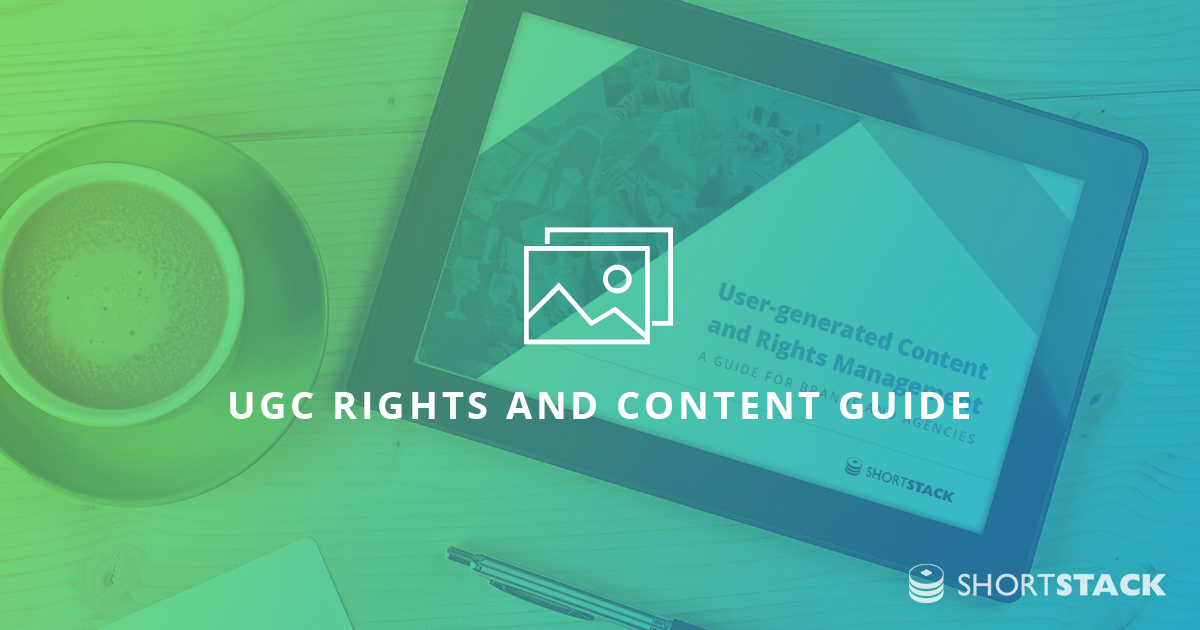
This content discusses the importance of user-generated content (UGC) in marketing and the challenges and benefits it presents for brands.
In 2020, people from all corners of the globe will take more than 1.4 trillion photos -- mostly from phones. (That’s a three-hundred percent increase since 2010!) A sizeable number of those images will be shared on social media.The photo-sharing phenomenon is responsible for the most important shift in advertising and trend in marketing: user-generated content (UGC). Marketers have recognized that featuring UGC is the key to building trust and conveying authenticity that modern consumers demand. And it’s an opportunity for marketers to connect with and cultivate brand ambassadors.Instagram’s 700 million users alone post 95 million photos and videos per day, while tens of millions more are shared on Facebook, Twitter, Tumblr, YouTube, etc.The growth of UGC presents a tremendous opportunity for marketers, but it also comes with challenges:
- Who owns the rights to all this material?
- When individuals post content that features a brand’s products and services, can the brand freely share them?
- How can brands protect themselves when they share their users’ content?
As a number of high-profile cases have shown, brands that use content without getting explicit permission from their users risk legal trouble. And then there is the public relations damage brands face when they fail to secure permission to feature UGC.
60% of Instagram users say they learn about products and services on the platform. Source: Instagram
User-generated content is about the users and the content they create. This guide is designed to help you, the marketer, understand the benefits of UGC and put into place best practices that will protect your brand and/or your clients.
Why Rights Management Matters Now
Copyright issues with regard to photos and video are not new, so why is it such a hot topic now? The main reason is brands have recognized what a valuable tool the content their customers create can be. Consider the following statistics from Shopify.When stores include UGC in their advertising, they see:
- 4x higher click-through rates
- 50% cost of acquisition
- 50% drop in cost-per-click
In fact, one study found that “user engagement” -- the personal connection that consumers share with a product or brand when they create content to connect with the brand -- is much more valuable than a “like” or a tweet.
73% of consumers say viewing UGC increases their purchasing confidence.Source: TurnTo Network
Since 70 percent of consumers say their peers’ opinions influence their purchasing decisions more than brand efforts do, brands should always be looking for ways to get their customers to do the talking for them -- on social networks, in web galleries, in print catalogs and mailers, and in email. Marketers also want to implement a strategy for acquiring the rights to the content so they don’t alienate their valuable brand advocates.
Considerations for UGC Featuring Celebrities One of the first rights management cases to gain widespread attention involved the actress Katherine Heigl. In 2014, she filed a $6 million lawsuit against Duane Reade after the pharmacy retweeted a user-generated photo of Heigl holding a bag with the company’s logo. Heigl had not posted the photo and was protesting the company’s use of her likeness in a promotional effort. The tweet was ultimately removed and the case was settled out of court.
Taking posted content and republishing it without permission from the content’s creator, basically, making a copy. And that is illegal.Most consumers are excited to have their images and videos shared by brands they follow on social media. And there’s a very good chance when a brand asks permission, the user will give it. In fact, 82 percent of Instagram users have given our brand partners explicit permission to use their photos and videos when asked.

82% of Instagram and Twitter users have given their permission to use their photos when asked by a brand.Source: ShortStack Customer Data
How to Ask Users for Content Rights
When it comes to rights management and user-generated content, there are two essential terms to understand: implied consent and explicit consent.As noted earlier in this guide, every photo or video created is considered the property of the photographer, and he or she owns the copyright. And while most content creators are individuals, most infringers are businesses.
Content Creators and Copyright LawIn 2017, skateboarder/photographer Max Dubler wrote a piece for the photography website Peta Pixel calling out an unnamed skateboarding company for posting one of his photos on their Instagram, without his permission. Dubler’s “No, You Can’t Use My Photo on Your Brand’s Instagram,” obviously struck a nerve because over the course of a couple of weeks, the post was shared nearly 160,000 times and garnered 571 comments. The author removed the name of the offending brand from his post, but not before the brand received criticism from photographers and consumers alike.
User-generated content marketing is still a relatively new concept -- in fact, the majority of brands aren’t yet using UGC -- and obtaining rights to use consumer photos has not been top of mind for the majority of businesses. That is changing.Many marketers have relied on a creator’s use of a brand hashtag in a caption or comment to indicate the creator’s approval for a brand to use the content. Brands can also require consumers to use a unique hashtag as the means to enter a contest or giveaway. When consumers post a photo or video using brand sanctioned hashtags, they are giving their implied consent.
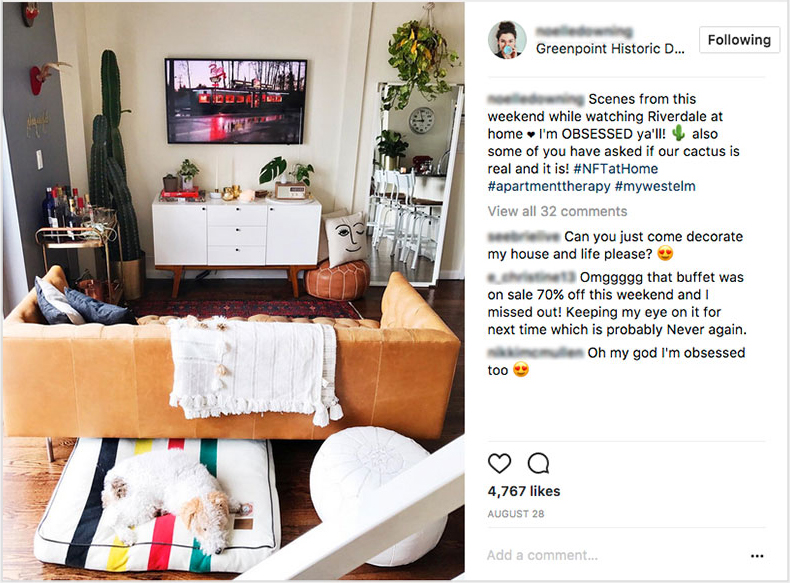
Instagrammer @noelledowning tags West Elm with the hashtag #mywestelm, which the retailer lists on its website and encourages customers to use. When consumers use the hashtag, they’re giving the retailer implied consent to use their images. However, as UGC become even more valuable, brands should obtain explicit consent so as to make it easier for them to use the content across all of their marketing channels.
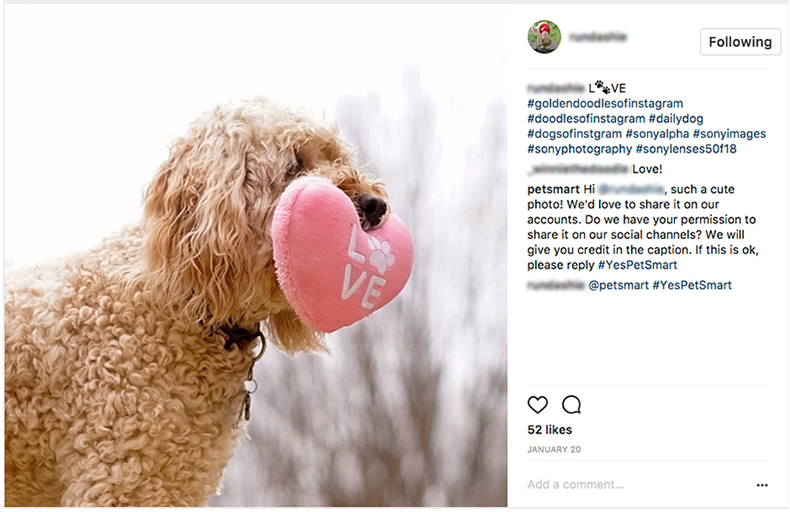
PetSmart leaves a comment for Instagrammer @rundashie asking for explicit consent to use their photo on PetSmart’s social channels. PetSmart should keep a record of requests and replies.
Best Practices for rights requests
- Be friendly but not overly familiar.
- Avoid awkward phrasing in requests. For example, “Are you 18?” could be flagged as spam or mistaken for sexually explicit material.
- Make requests from a brand account, not a personal account. And never use a blank “requests only” account to ask for rights.
- Don’t use programs that auto-respond to posts as these automation tools can request rights for offensive posts.
- On Twitter, start requests with the handle of the user you’re requesting rights from. That way the request is formatted as a reply, so not all of your followers will see it by default.
- Respond to everyone who grants you rights with a simple, “Thank you.”
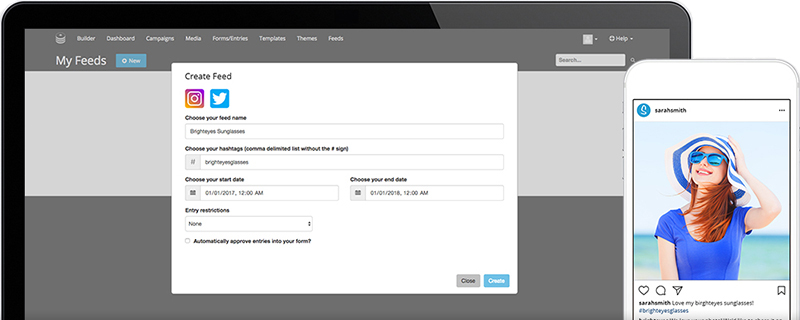
ShortStack can manage consent issues for you and your clients.
UGC and Minors Brands should be especially vigilant about obtaining explicit rights before using UGC featuring children under the age of 13. The Children’s Online Privacy and Protection Act (COPPA) is designed to protect children’s privacy and give their parents control over photos, videos, and audio files that contain their children’s images or voices. If you intend to use content featuring children, make sure you’re familiar with COPPA.
ShortStack’s Rights Management Solution
On Twitter, you can use ShortStack to monitor and collect requests and replies. On Instagram, you must do so manually.
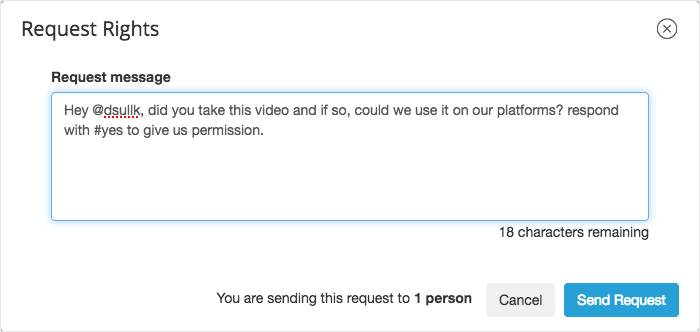
ShortStack’s rights management feature lets you gain explicit written consent from content creators on Twitter, and to keep a record of their willingness to allow their photos and videos to be featured in your brand’s marketing programs.
How it works
Once authorized, ShortStack’s tool scouts Twitter and Instagram and pulls UGC with specific hashtags into a private feed. From there, you select the posts you want to secure the rights for and the content creator receives a comment asking for permission. When the user replies “#yesbrandname” (or using whichever hashtag you specify), you’re notified that they’ve given you explicit permission, and you’re able to display the content on your own channels. Note: If you want to obtain rights to content you find on Instagram, you will have to request rights manually, and should keep record of both your requests and your users' replies.
Step 1: ShortStack collects photos and videos with your brand’s hashtags into a moderation queue.
Step 2: Your brand representatives, or ShortStack, examine the collected content for appropriateness.
Step 3: ShortStack sends individual content creators a comment asking for permission to use the photo/video. (The comment is sent from the brand, not ShortStack.)
Step 4: Users are asked to reply to grant permission, and invited to link to a URL that contains terms and conditions (see “Terms and Conditions Landing Page Template” below).
Step 5: ShortStack compiles responses that grant explicit permission into a database; posts that users do not grant permission for, and requests that are unanswered, are also stored.
Most important: You have a record that the user has granted you permission. All requests and responses are compiled into an exportable database for you and/or your clients.
Why Explicit Consent Protects Your Brand and Your Clients
1. You have a record of your user’s consent
Keeping a record of rights you’ve requested and rights you’ve been granted allows your business to capitalize on UGC and use it across all of your channels, including on social, in email, in-store and more.
2. You’re able to organize and have access to all the content you collect
ShortStack stores all the media you’ve collected, including rights-approved photos and video.
3. You build relationships with your best brand advocates
Consumer who post photos and video of your brand are likely already fans of your business. Asking them for permission to use the content they share lets them know you value the relationship and may even make them even more loyal.We hope this guide has helped you understand the importance of securing explicit permission to use UGC. ShortStack’s rights management experts are available to guide you through the process of planning UGC campaigns, including hashtag contests, and creating a UGC strategy. To learn how ShortStack can help you build a library of rights-approved UGC, schedule a call with us today.
FAQs
1. Are Instagram and Twitter photos and video in the public domain and free for brands to use?
No. Photos and video posted to Instagram and Twitter are owned by their creators and subject to copyright protection.
2. Do the same rules apply to written content?
Yes. For example, if you’re a food brand and you find a recipe someone has created with your product, you’d be wise to secure permission before using the recipe in your product marketing.
3. When should a brand get rights to user-generated content?
If you intend to use the photo/video away from the network where it is posted, always. This includes:
- Reposting to your own Instagram accounts since you must download the photo and upload it again.
- Using the photo or video in digital or print advertising.
- Displaying the photo or video on your website.
- Displaying a modified version of a photo.
4. What is the easiest way to inform users how and where their content will be used?
In addition to asking users for permission to use their content, you should invite users to read your brand’s terms and conditions. You can link to your terms and conditions in your profile, or even within the comment if you have a simple URL (see “Part 5: Terms and Conditions Landing Page Template” for tips on how to do this).
Terms and Conditions Landing Page Template
A best practice for rights management is to create a landing page that contains details about where and how you will use the UGC you collect. If you have age minimums or other requirements or restrictions, this is where you will outline them.Customize the URL of your landing page so it’s something like www.yourbrandname.com/rights making it easy for people to find, even if you include the URL in a comment. ShortStack offers a template you can use to post your terms and conditions.
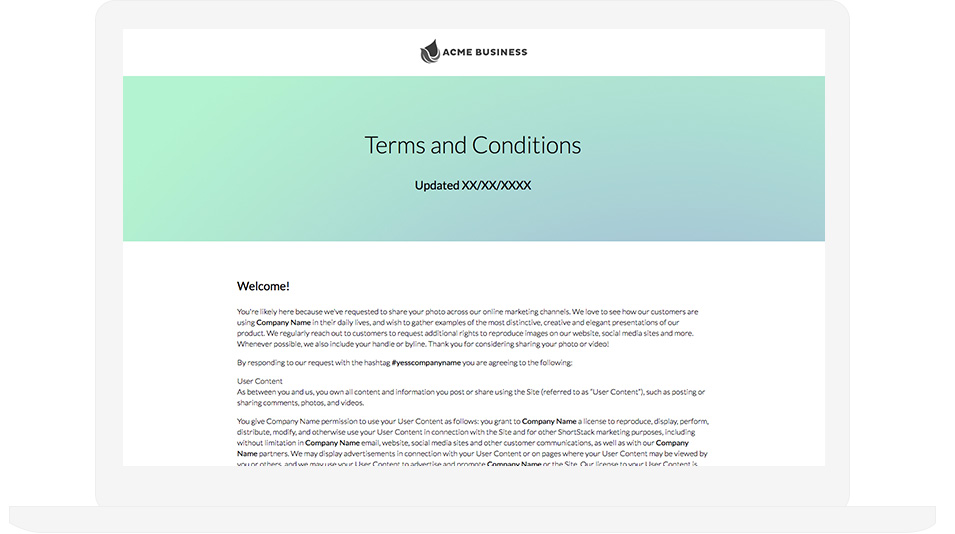
ShortStack's Terms and Conditions Landing Page templateSince some social platforms will block content containing phrases like, “Are you 18?”, you want to take steps to protect your brand and your clients. In a worst-case scenario, a social platform could suspend your account for violating their T&Cs. Instagram can also prevent posts with certain hashtags from appearing in its feed. There are even a significant number of seemingly innocuous hashtags that have been banned because people have complained that some images bearing the hashtag violate Instagram’s community guidelines (banned hashtags include #happythanksgiving, #dogsofinstagram, #callus and #inshapelifestyle).
Download the free guide
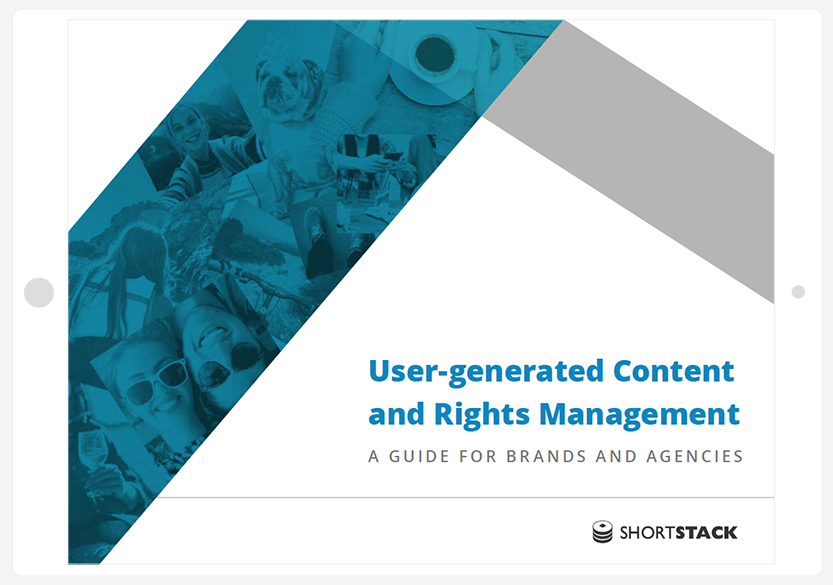
GLOSSARY
Advocate: Anyone who publicly speaks positively about your brand. Brand Awareness: The general amount of recognition that your brand receives. Huge brands like Coca-Cola have a large amount of brand awareness, while a new mom-and-pop shop might have some local brand awareness but zero global brand awareness. Children’s Online Privacy and Protection Act (COPPA): A law that imposes requirements on operators of websites or online services direction to children under 13 years of age, and on operators of other services that have actual knowledge that they are collecting personal information online from a child under 13 years of age. Explicit Permission: Rights granted by someone who has responded to a brand’s rights request with a reply such as “#yesbrandname.”Implied Permission: Rights granted by someone who is using a brand’s hashtag, such as a hashtag required to enter a contest. Moderation: The practice of checking content that has been placed in a queue, but before it is displayed on a brand’s website or social channels, to ensure the content is not libelous or undesirable.User-Generated Content (UGC): Any form of content created by people and made available on social media websites, blog posts, wikis, videos, reviews, comments, etc. The most common type of UGC is photos, but videos, and written content can also be forms of UGC.If you're ready to learn more about how ShortStack can help you with issues related to rights management on Twitter, please get in touch.
Create your first contest now
Get Started Today. It’s free and we don’t need your credit card.




